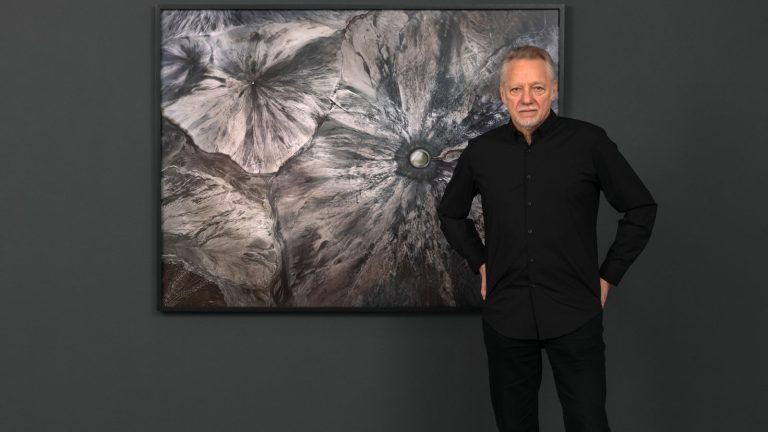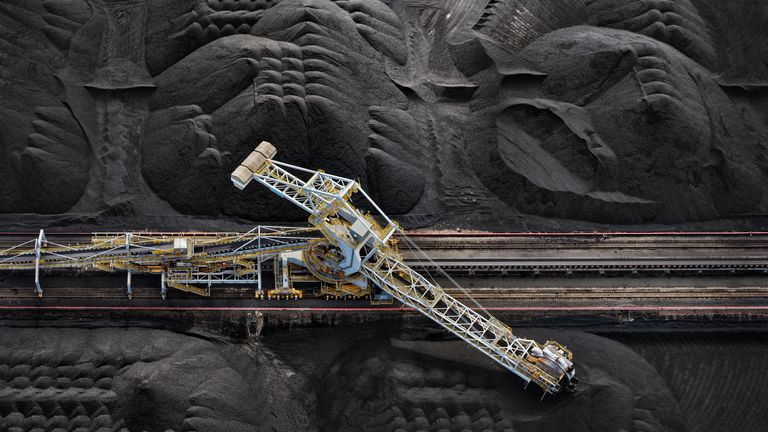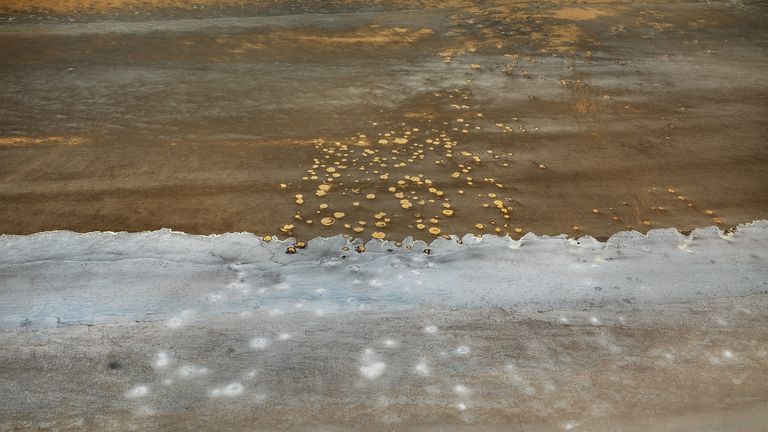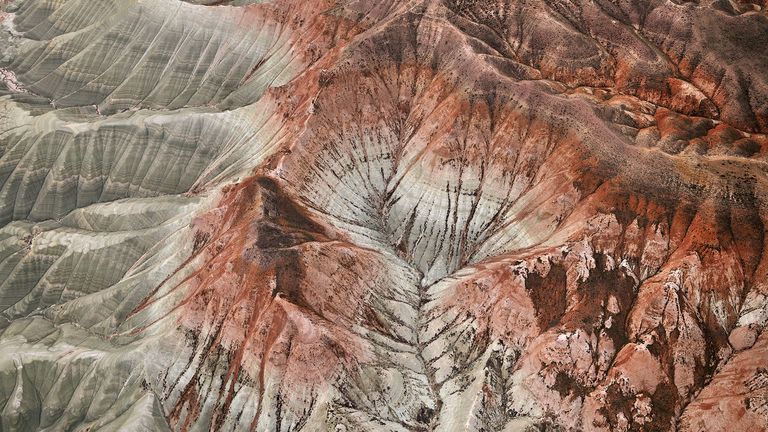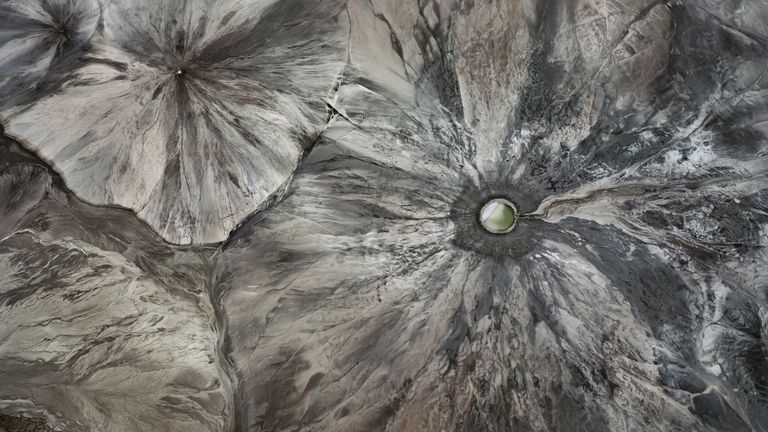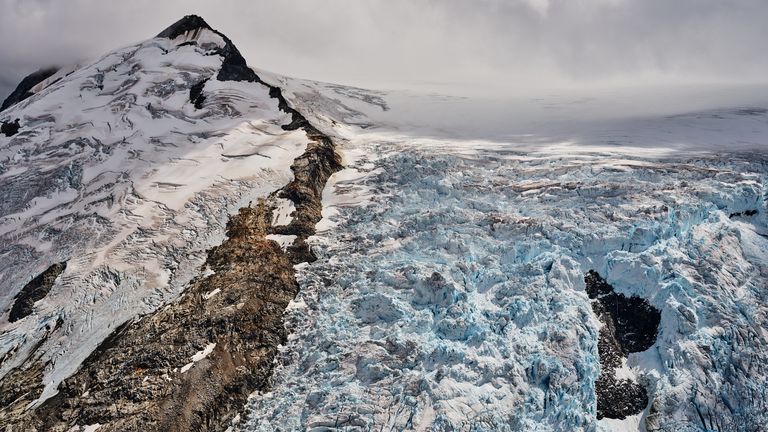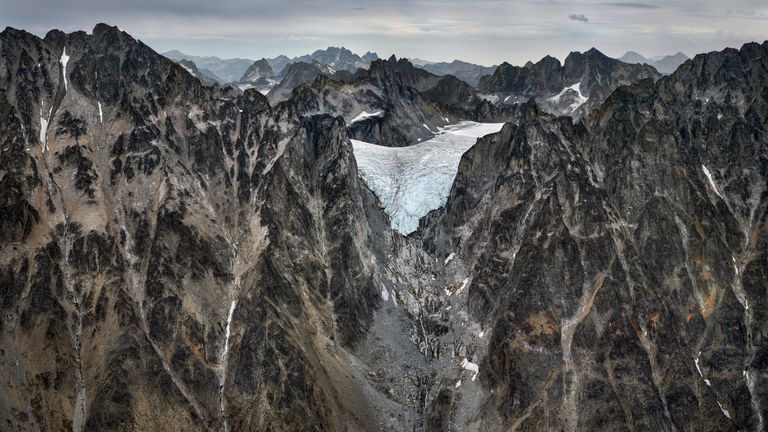Photographer Edward Burtynsky says people should be “screaming 10 alarms right now” because of the urgency of the climate crisis. Instead, he says, “it still feels like we're rearranging the deck chairs on the Titanic.”
The 69-year-old Canadian artist has reinvented landscape photography and has spent the past 40 years documenting man's dominance of the planet.
Explores human impact around the world – in all its beauty and gloom.
But does he see any contradiction in creating beautiful, documenting images like this? Devastating effect On the ground?
He told Sky News: “My work is revealing, not accusatory.
“Every living species takes something from nature to survive, and we, as a top predator, take a big part from nature to survive.
“All of these things I'm offering would be perfectly fine if there were a billion people on the planet. The fact that there are eight billion makes it a problem. It's too much of a good thing.”
His large-scale panoramas celebrate and question human ingenuity, challenging his audiences to look beyond their own backyard.
They also serve as a critical reminder of what could be at stake without urgent changes to the way we use the planet's resources.
Born in Ukraine, Burtynsky's parents moved to Canada After World War II. His father – who gave him his first camera when he was a child – died when he was just 15 years old.
Ramps and helicopters
The necessity of earning enough money to allow him to study photography led him to find work in major industries, working in the automobile and mining industries as a young man.
“I moved up north and worked in big mines. And I got to see those worlds for myself. And I think that kind of opened my eyes to this other world that gave me the idea that most people hadn't really seen those worlds.”
Having once stood on the edges of perilous quarries and mines to take his photographs (“My mother wouldn't approve of it, it was kind of dangerous,” he admits), he now uses helicopters to get his aerial photographs.
Over the course of four decades, he has traveled photographically to multiple countries on every continent (except Antarctica), and his work is included in the collections of more than 60 museums around the world.
Disappearance of rivers of ice
His recent trip to photograph the coastal mountains of British Columbia, Canada, for his latest exhibition – New Works – was a stark reminder of a rapidly changing world.
From a bird's eye view, he could see that the glaciers – dating back 150,000 years – had receded significantly compared to where they were 20 years ago due to rising temperatures as a result of human activity.
Not only is the disappearance of glaciers a clear measure of human impact on the environment, but it will continue to impact the ecosystems that depend on their meltwater.
Burtynsky's new group also explores soil erosion in turkeyAnd the impact of coal mines on Australia.
He admits that it is sometimes frustrating trying to convey the urgency of the climate emergency message.
'Our legacy is troubled'
“We have this particular moment and things are evolving quickly. I'm trying to bring a sense of urgency there… This has been mapped out scientifically and we're very good at predicting what to expect.”
His environmental mission – his life's passion – is deeply entrenched.
“I have two daughters and I want them to have the opportunity to have a family as well. So, if you know, the legacy we're leaving behind is troubled.”
But his environmental activism is also rooted in his personal knowledge of major industries. He says our use of the world's most valuable resources is not something that can simply stop, but instead needs careful planning, with alternative energy incentivized, to help us transition to more sustainable methods.
So, what does he think of the growing army of climate activists who are drawing attention to the issue by doing more extreme things to make headlines — especially when that involves demonstrations at art galleries?
'I understand the frustration'
“I understand why culture and the arts in particular can be a target, and someone is trying to get attention through art celebrities. That's what happens, they take a famous painting and they throw some paint on it… or they paste themselves…
“I think a better place might be to show up to the companies causing the problem – to go straight to the source of the problem. But I understand the frustration.”
As for renewed scrutiny of the source of funding for some of our major arts institutions, including galleries and museums that accept money from major oil companies, he says it's a tough road.
'Be careful what you wish for'
“The line is somewhat dangerous because you can suddenly discover that the culture is no longer viable.
“I also think oil companies have to go through a transition, and they can do a lot to make a difference.
“We still need oil in the meantime until the transitional phase is complete,” he said. [and we should] Be careful what we wish for, because if oil suddenly stopped tomorrow, I would call that chaos.
“We wouldn't have food getting to the cities. We wouldn't have transportation running, and everything would come to a screeching halt. So, unfortunately, we're still tied to that energy source for the foreseeable future.”
He believes part of this future lies in the essential role that art can play in raising environmental awareness.
'there is still time'
“Artists have a role, and creativity has a big role in the future, because we have to reinvent our world. We have to find a world that is not built on this consumer culture that says the more stuff I have, the happier I will be.”
“I think everyone finds that this is just a shallow value system that has probably been sold to us through some very influential advertising campaigns.”
Should viewers of his work feel optimistic or pessimistic when leaving the exhibition?
“I hope people can walk away saying there is still time to do something.
“I think pessimism tends to be a cynicism that nothing will work out, so… [people think] 'Why should I bother?' “I will continue to work as usual. And I don't think that's the right position.”
But alongside this optimism, Burtynsky has a clear vision of the challenges the world faces.
Atmospheric rivers, water bombs and heat domes
“Storms are coming — we're hearing all kinds of new terms: 'atmospheric rivers'; 'water bombs' — these huge amounts of water hitting the city at once; 'heat domes.'” All these new terms try to describe what's coming.
“Fire seasons are already starting early, and Texas is having one of the worst fire seasons on record, which is a month and a half or two months early.”
“It's a question of how quickly we can stop and desist from the worst activity we're doing, which I would say right now is loading carbon dioxide into the atmosphere is our most pressing problem,” he concludes.
“We have a lot of problems, and I think if people are going to take action, they need to take action. The time for words is over.”
Edward Burtynsky's new works are on display at the Flower Gallery until April 6.
A retrospective of his work, “Extraction/Abstraction,” is on view at Saatchi Gallery until May 6.
Click to subscribe to ClimateCast wherever you get your podcasts
Watch the full interview on Climate with Tom Heap, Saturday and Sunday at 3.30 and 7.30pm on Sky News.

